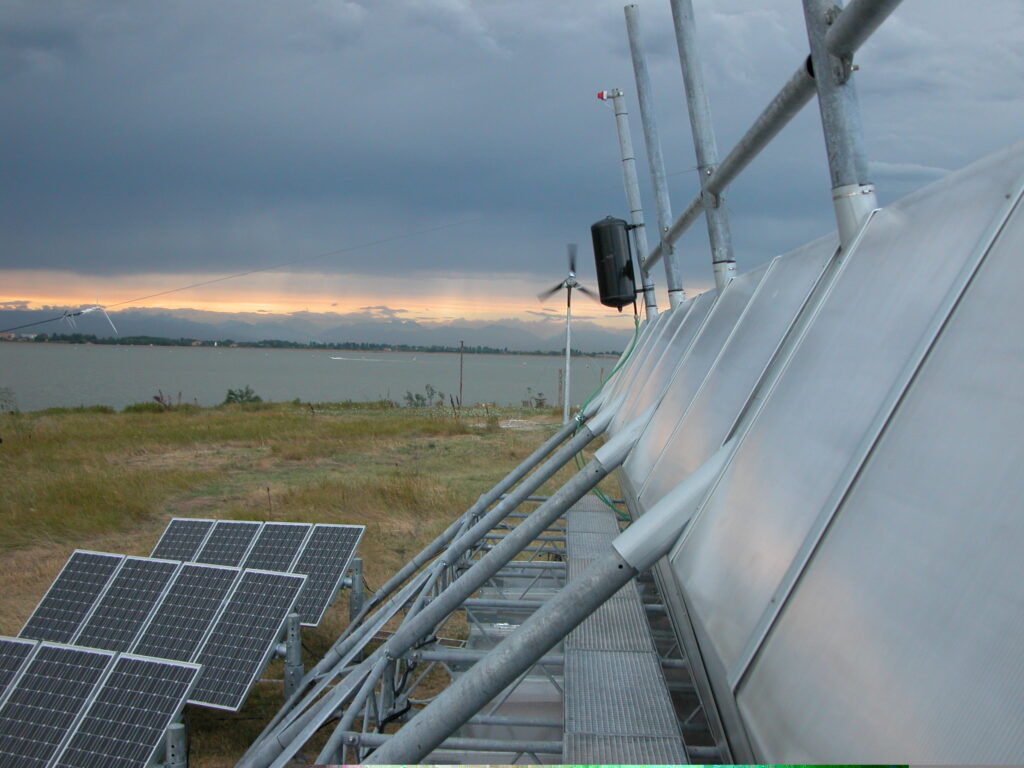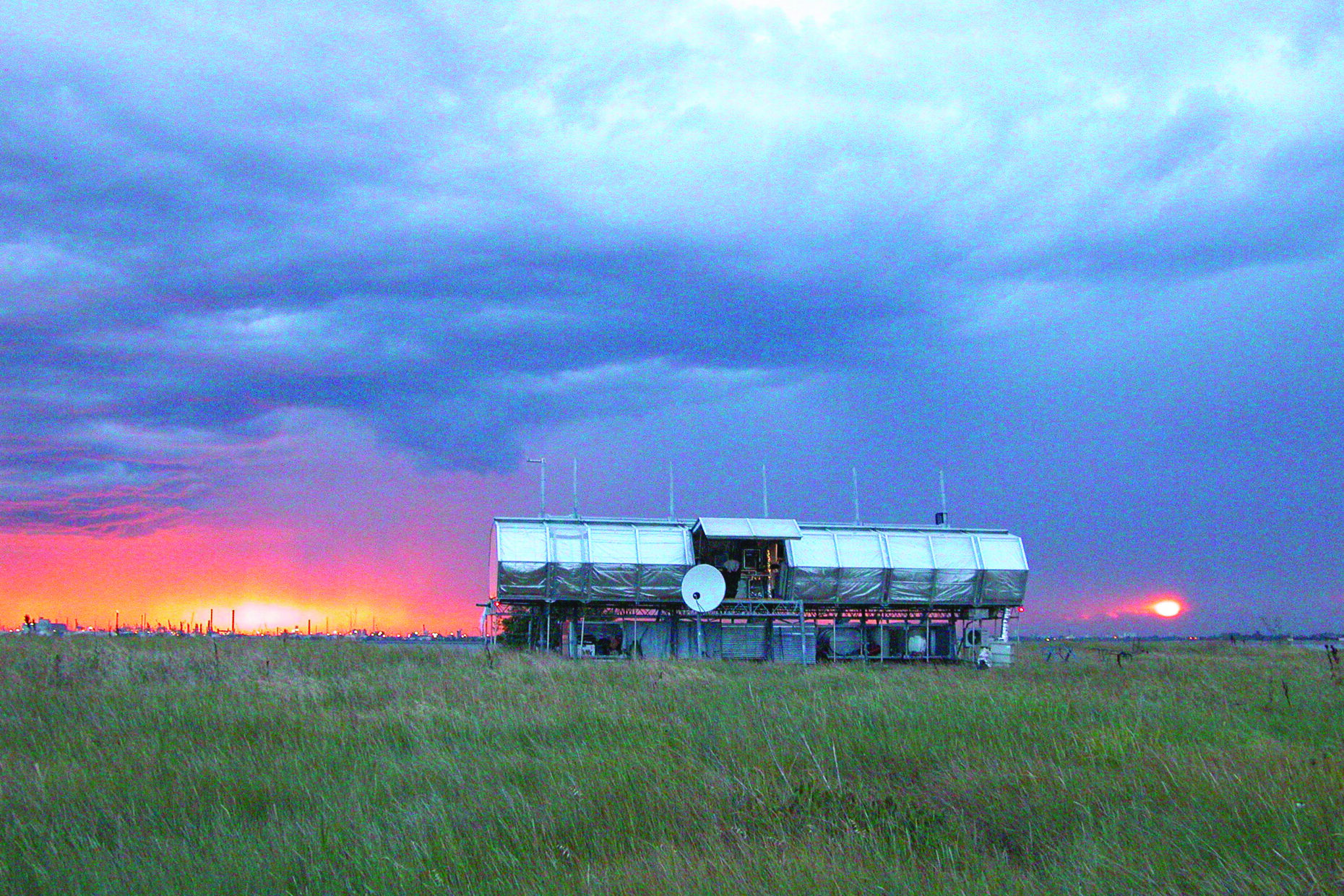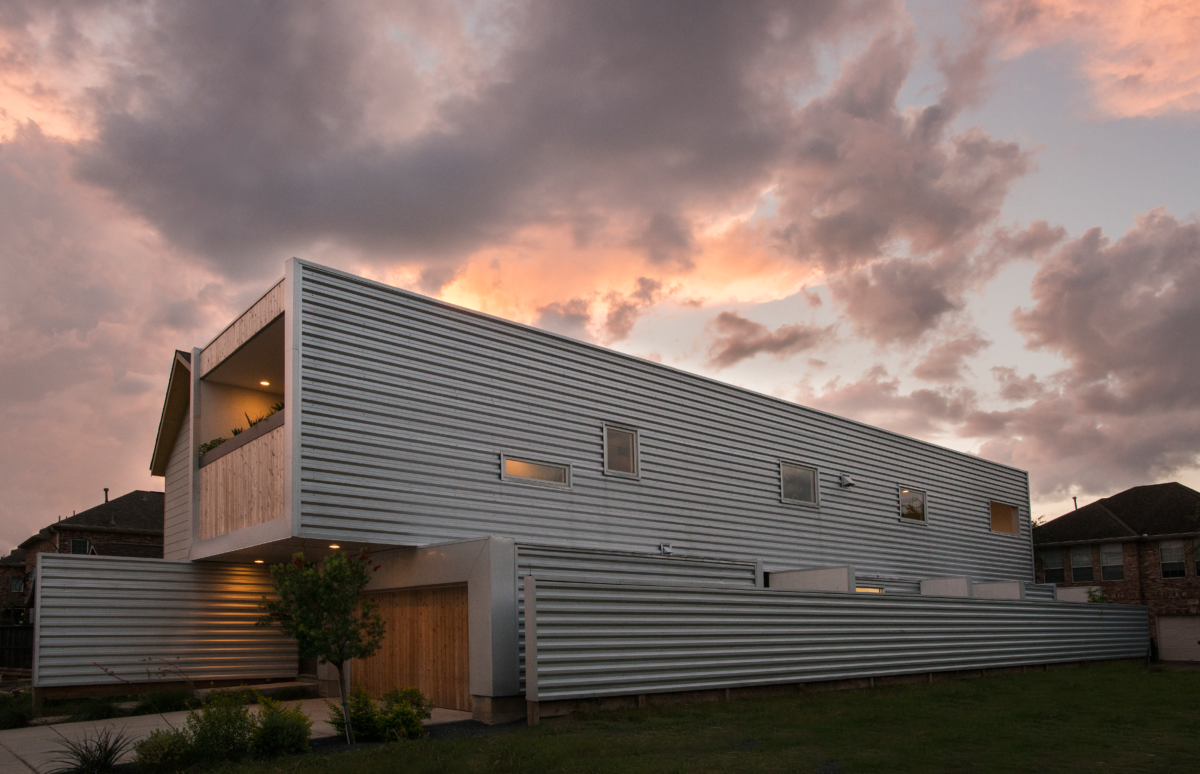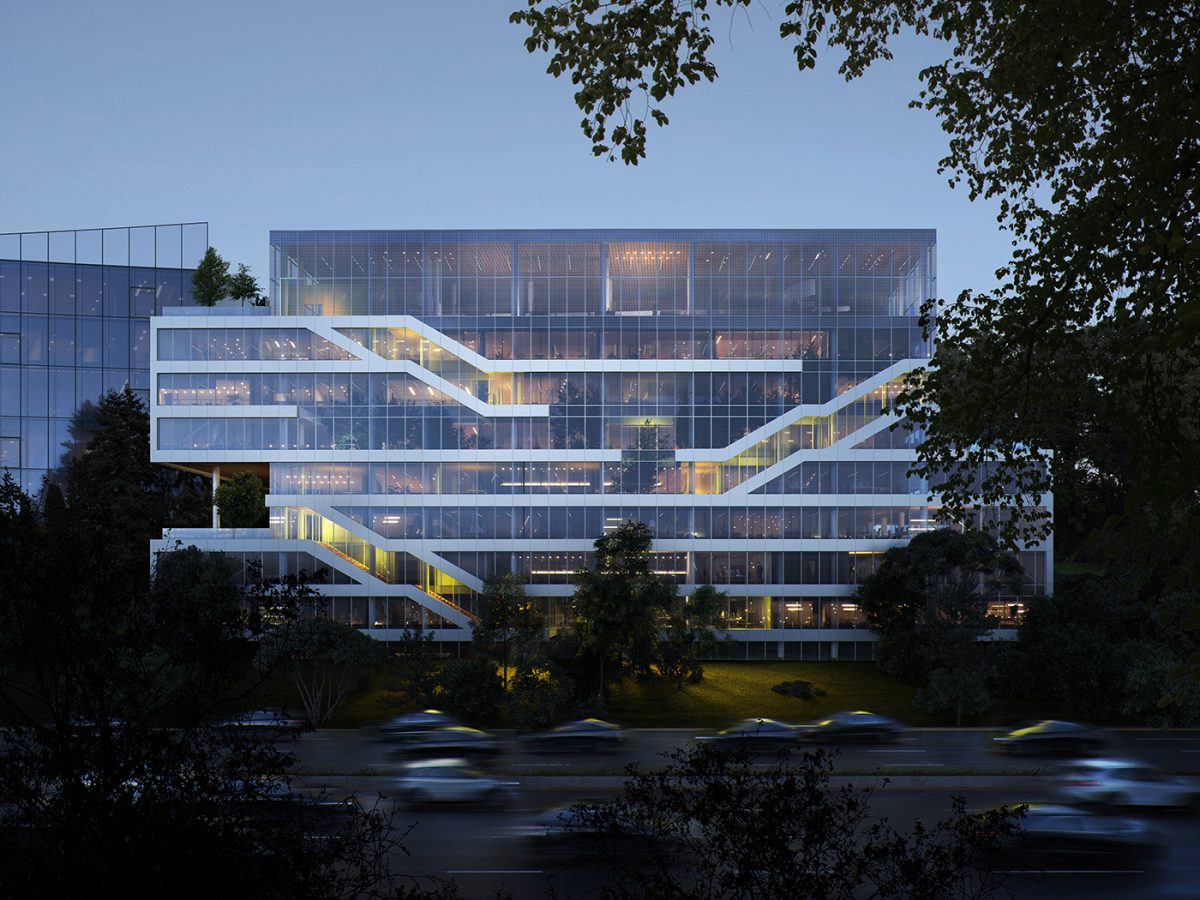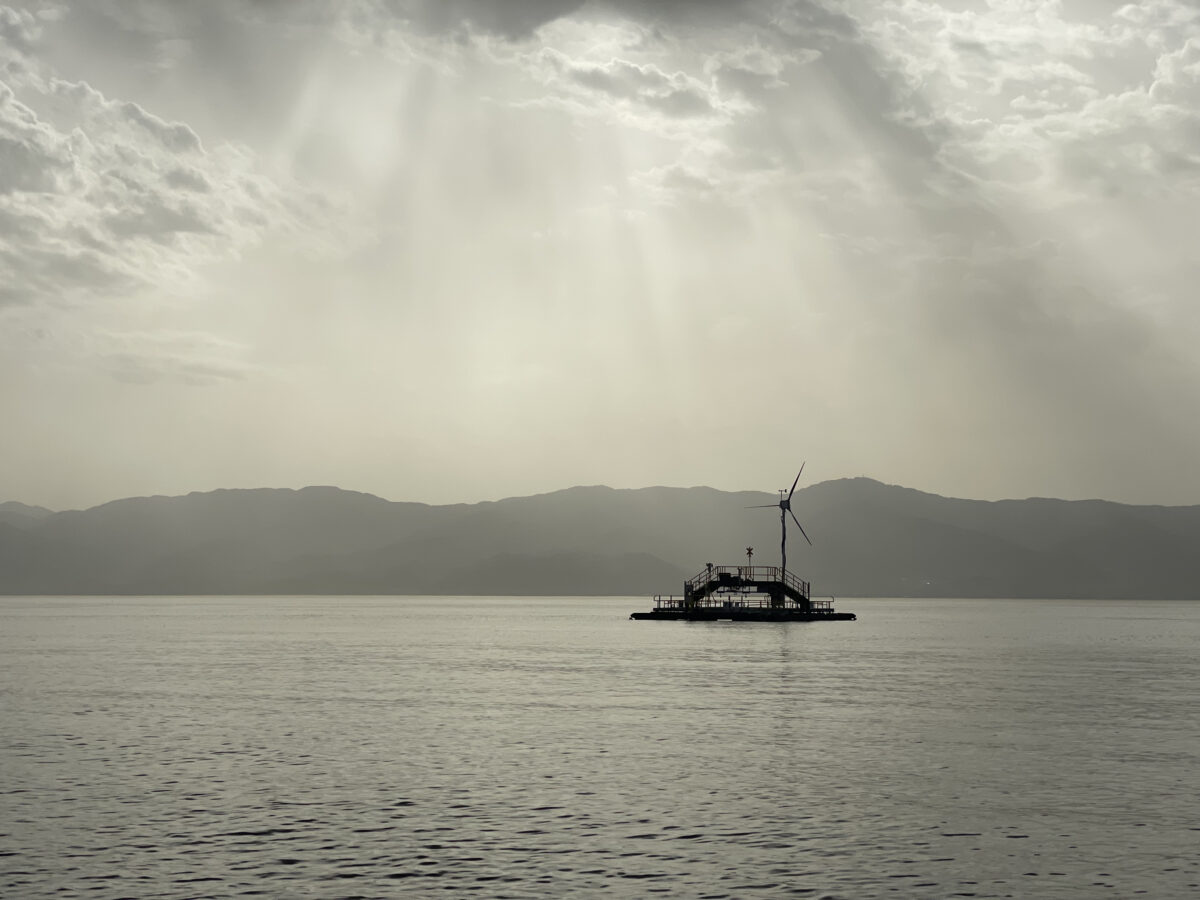During the 50th Venice Biennale in 2003, curated by Francesco Bonami and as part of the Individual systems exhibition curated by Igor Zabel, the Makrolab mkIIex autonomous structure, systems and environment was set up on the island of Campalto in the Lauguna di Venezia from June to November of that year. A real time communications console and presentation of the project through a three channel video film created by Marko Peljhan and his collaborator Sašo Podgoršek was set up in the Arsenale part of the exhibition.
The project, conceived by Peljhan in 1994 and first realized during documenta X in Kassel in 1997 was set up on the island in its mkIIex final iteration. This particular phase of the project, which had a completely autonomous energy (wind and solar), water (fresh water was produced from the lagoon water), waste (a bioreactor waste management system was conceived for and operated by the project) and biogardens systems, was the final version before the Makrolab move to the Arctic and Antarctica through the I-TASC (Interpolar Transnational Art and Science Constellation) and its participation in the International Polar Year activities as project 417 as well as the Arctic Perspective Initiative. From 2007 on the project is being led under the LAB Ladomir Antarctic Base heading.
Makrolab was conceived as a complex systemic environment and machine to explore global communications, weather/climate and migrations systems as the three complex and interrelated domains that define the inner workings of holistic planetary systems. Suffice it to say that this was a project that was well ahead of its time both in understanding the complexity of the interrelated global systems as well as its transdisciplinary reach, which encompassed telecommunications research, open source software development (dyne.org) as well as alternative energy systems for long duration sustainability.
In July 2003, during the Campalto operations, the Makrolab crew was able to task and direct the QuickBird satellite, built by Ball Aerospace to acquire the self portrait of the lab on Campalto and receive the raw imagery and process it on the lab.
This is the first time we are revealing this Earth-Orbit-Earth part of Makrolab media and electronic disturbance operations to the wider public and the first time the Makrolab, which was well hidden on Campalto is revealed to the wider audience of the Biennale.
Together with the QuickBird satellite auto-portrait, we are also presenting the original Makrolab project schematic and the model of the mkIIex architecture.
Production: Zavod Projekt Atol, Ljubljana, Slovenia
Support: Ministry of Culture, Republic of Slovenia, Zuecca Project Space, UCSB Systemics Lab, City of Ljubljana Cultural Department
